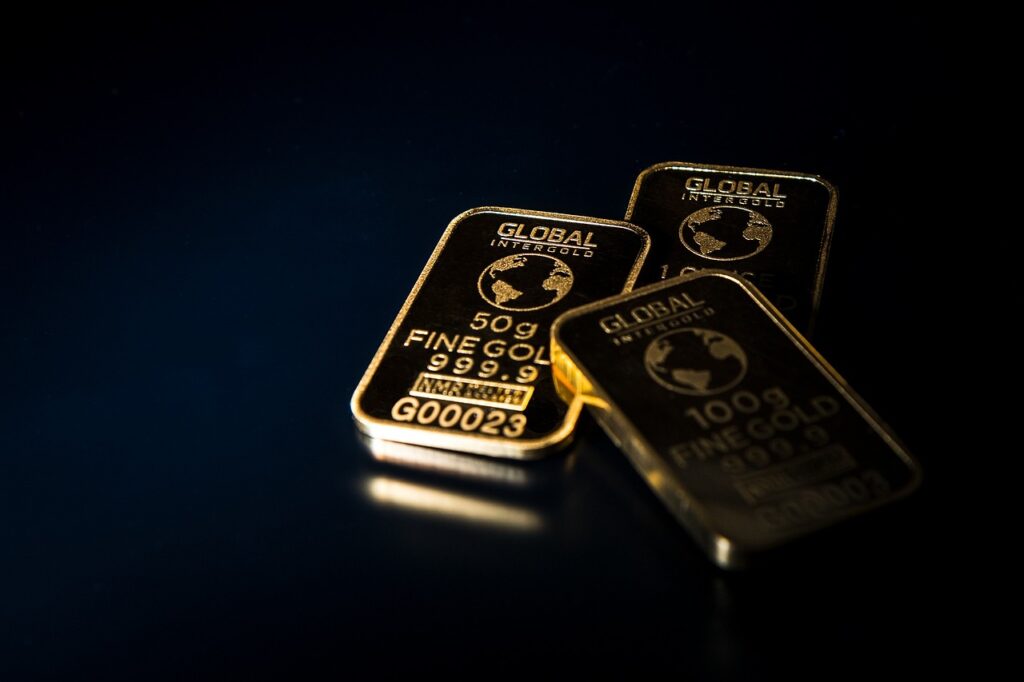Gold has surged above $4,000 (£2,985) an ounce, setting a historic record. Investors are flocking to the precious metal as political tensions and economic uncertainty rattle global markets. The rally marks gold’s strongest rise since the 1970s. Prices have climbed nearly one-third since April, when US President Donald Trump’s tariffs disrupted global trade and unsettled financial systems.
US shutdown escalates market anxiety
The US government shutdown, now in its second week, is fueling uncertainty in markets worldwide. Analysts say delays in key economic data releases have intensified investor caution. Gold, long regarded as a safe haven, continues to benefit from global turbulence. On Wednesday afternoon in Asia, spot gold — the live market price for immediate delivery — surpassed $4,036 an ounce. Gold futures, reflecting market expectations, reached the same level on 7 October. Futures contracts allow traders to lock in prices for transactions at a future date.
Political deadlock drives investors to gold
Christopher Wong, rates strategist at OCBC in Singapore, called the shutdown a “tailwind for gold prices.” He said repeated political clashes over public spending have pushed investors toward safer assets. During Trump’s first term, gold rose nearly 4% during a similar month-long shutdown. Wong cautioned that prices could fall if the impasse ends sooner than expected.
Analysts surprised by gold’s record rally
Heng Koon How, head of markets strategy at UOB Bank, described the surge as “unprecedented” and far beyond forecasts. He linked the rise to a weaker US dollar and growing participation from retail investors. Many buyers are turning to exchange-traded funds (ETFs) rather than physical gold. The World Gold Council reported a record $64 billion invested in gold ETFs so far this year.
Demand expands from banks to retail investors
Gregor Gregersen, founder of Silver Bullion, said his firm’s customer base has more than doubled in the past year. He noted that retail investors, banks, and wealthy families increasingly see gold as protection against global instability. “Most of our clients are long-term holders,” Gregersen said, explaining that many store their gold for over four years. “Gold will eventually dip, but in this environment, I expect it to rise for at least five more years,” he added.
Risks remain behind gold’s surge
Despite record highs, analysts warn that gold could lose momentum if market conditions change. OCBC’s Wong said prices may fall if interest rates rise or political tensions ease. In April, gold dropped about 6% after Trump chose not to dismiss Federal Reserve Chair Jerome Powell. “Gold serves as a hedge against uncertainty, but that hedge can unwind quickly,” Wong said.
In 2022, gold fell from $2,000 to $1,600 an ounce after the Federal Reserve raised rates to fight post-pandemic inflation, Heng recalled. A sudden surge in inflation could again force the Fed to act, threatening gold’s momentum.
Trump’s feud with the Fed adds volatility
Wong said expectations that the Federal Reserve will cut rates are supporting gold’s rise. Yet Trump’s attacks on the central bank are unsettling markets. He has accused Jerome Powell of moving too slowly and tried to dismiss Fed Governor Lisa Cook. Wong warned that such actions “undermine confidence in the Fed’s credibility as an inflation-fighting authority.” In a world marked by political tension and economic uncertainty, he added, gold’s role as a safe haven “has never been more critical.”


